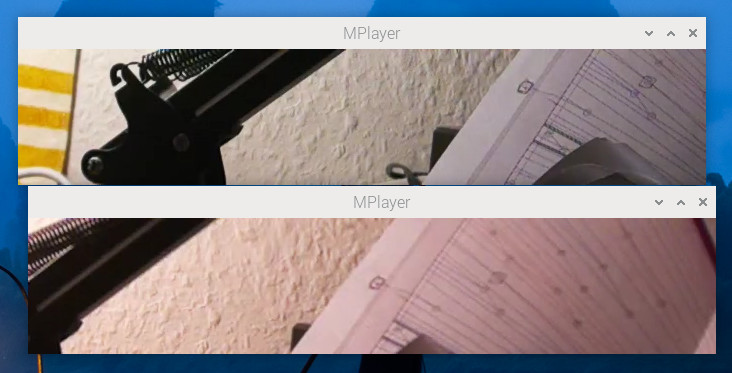-
Notifications
You must be signed in to change notification settings - Fork 8
New issue
Have a question about this project? Sign up for a free GitHub account to open an issue and contact its maintainers and the community.
By clicking “Sign up for GitHub”, you agree to our terms of service and privacy statement. We’ll occasionally send you account related emails.
Already on GitHub? Sign in to your account
Selecting "1: imx296" as active camera and then clicking submit kills the server #14
Comments
|
I could reproduce the error. It seems that Picamera2 wants to stop a preview, although the camera had been started with the option Probably, I need to get back to the Picamera2 team. |
|
What you could do in the meantime: When in the Settings screen, wait for more then 10 sec until the live stream stops (make sure that no other application is streaming). |
|
Switching the camera should now work with V2.5.3 (See Release Notes) Just to keep in mind: |
It does, thank you!
Thanks for that pointer, the memoize makes all work, and "Switch Cameras" button below in "Web Cam" tab makes switching between cameras so easy! I use my two GS cameras for high framerate video recording (>300fps). A typical resolution is 688x136@400fps. I used your streaming Web Cam view for adjustment, I set resolution to 688x136 both cameras in Config tab: Unfortunately that are not the cropped regions I get with high framerate GScrop tool: P.S: Starting server now does not work (rpicam-vid does not work either), until eg. |
I will have a look what the reasons might be.
Unfortunately, I cannot reproduce. |
No fault on your side, its a libcamera thing. I used your server and used webcam view seeing both cameras. As I said, no prblem to get it working again. |
I had a look at this and found that my knowledge of cropping in Picamera2/libcamera was quite poor. Now, you should be able to better handle the 688x136 resolution. The new button Default will set the ScalerCrop window to ScalerCrop Default which is what Picamera2 and the underlying libcamera will show if you do not explicitely set ScalerCrop. |
|
Thanks for the detailed documentation. |
|
Sorry, I am late. |
|
The hard way would be to delete the database: If you do not have any photo series, for which data are stored in the database, you will loose nothing but the user. The command to do this is |
|
Thanks, that worked. I used raspi-cam-srv without issues after that, then stopped it. Then I used my GScrop tool twice to crop to 688x136 for both cameras: This is the result: Then I started raspi-cam-srv again and accessed 127.0.0.1:5000 in browser. This behavior is same as when I try to use rpicam-vid in that situation. You said raspi-cam-srv should now work with crop. Can you please try yourself and use the GScrop command that matches (assuming you have only one GS camera connected). Then you will see hopefully the error message I showed and can guide me how to resolve that. This is the tool: |
|
Hi, It seems that the tool did not change the camera settings. Anything, I am doing wrong with your tool? Anyway, it seems that you are assuming that raspiCamSrv would work with libcamera settings which you have modified with GScrop before starting raspiCamSrv. Maybe, the Picamera2 team could make modifications which allow this. Since in my system, your tool does not seem to be changing the camera setting, you could probably activate debug logging in raspiCamSrv. |
|
Hi, do you use latest GScrop gist? P.S: |
|
In principle, the raspiCamSrv Live stream, which is also used in the Web Cam screen, uses logically the same code except that I do not use the QT-preview, which only works with connected display, but streaming the lores or main stream, depending on configuration. But it's interesting: If you ran your GScrop tool before starting Picamera2, then this should also work with raspiCamSrv. |
|
I have modified your code to and get What is wrong? Just to mention: |
|
Hi, when I run your modified shell script I get this: When I run my GScrop it reports /dev/media0 first: In my output of your script /dev/media0 shows no error. In your output all /dev/mediaX are bad, so that does not work. Can you please try on a fully updated SD card or SSD? |
|
I have prepared a fresh SD card with Imager 1.8.5 (current version) and fully upgraded the system. Same result: The kernel (6.6.20) is still behind yours (6.6.31). Can it be that you are using some secret configurations? |
|
Ah, I remembered why my kernel version was so old. A post from naushir at Mar 8 states that the latest kernel version include the fix. |
|
Now updated to the latest kernel version 6.6.35. Same result, now with a V3 and a GS camera connected: |
|
OK, I finally got it working. I have now analyzed the error. I then simplified this code by removing camera configuration and setting of controls to get If I run this Python code after your cropping has been applied, I get a libcamera error:
That is the reason why raspiCamSrv fails starting the camera. If the code is run after cropping has been set back to standard, no error occurs. Need to investigate this further. |




Details here:
https://forums.raspberrypi.com/viewtopic.php?p=2219364#p2219364
Besides that raspi-cam-srv is really nice with my two GS cameras on Pi5:

The text was updated successfully, but these errors were encountered: